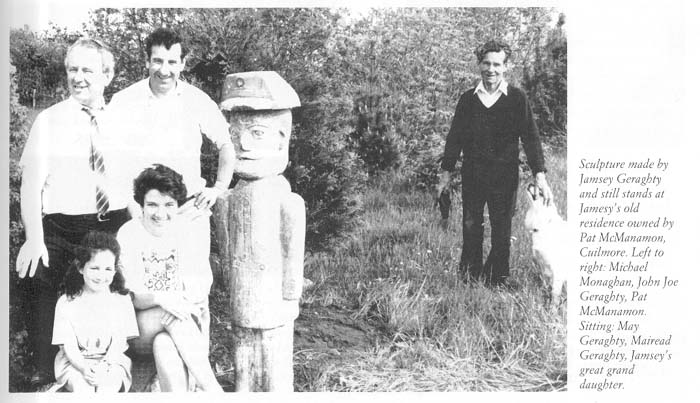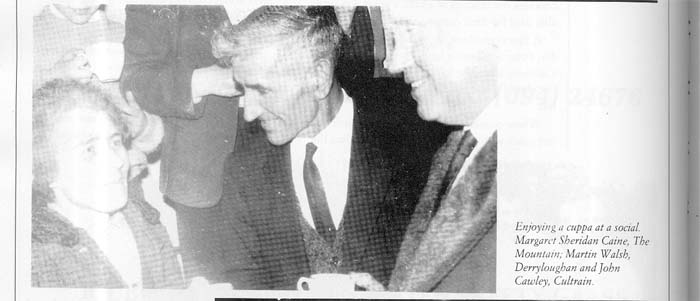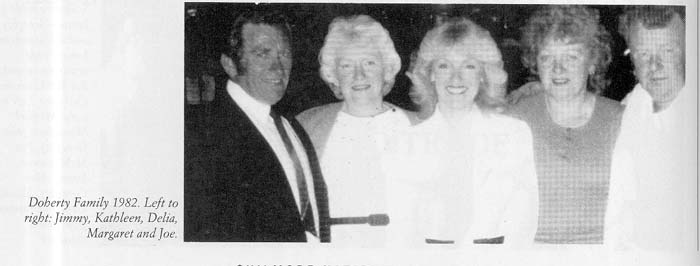
Before bags of NET 10-10-20 in their bright, plastic packaging, became a common feature on every farm, the people of Cuilmore, Cortoon and Derryloughan did things the hard way. They made their own fertiliser.
Too far from the sea-shore to avail of seaweed as a fertilizer, they had to settle for lime in order to sweeten the land and help boost the growth generated by farmyard manure.
The lime was made by "cooking" limestone chippings in one of the many limekilns that dot the countryside. The system was probably introduced by the Congested District Board in the post-Famine years and, because every farm contains the remains of a kiln, a grant was probably paid for their construction.
A fine example of such a kiln is to be found on Mr. Peter Spellman's land, on the eastern shore of Cuilmore lake. The kiln is about 12 feet high, is circular in shape and is built into the side of the hill.
Where possible, granite stones -which did not crack with the heat -were used to line the kiln and it spread upwards, in a widening funnel shape, from the pocan (small pocket or pouch) at the bottom. The pocan contained the fireplace but the fire, of turf, was lit outside an then, when the sods were well alight, they were shovelled into the pocan.
The door at the bottom, giving access to the pocan, is about 3 feet high. Above the pocan, within the kiln, iron bars were laid across to form a fire-grate. On this grate a layer of turf was laid and, on top of the turf, a layer of broken-up limestone.
Mr Peter Spellman remembers that "the limestone would be broken up small and a layer about 6 inches deep laid on top of the turf. On top of that, another layer of turf and then more limestone."
"You would light the fire outside and then shovel it into the pocan.Once you got the fire inside the kiln really hot, you would feed in more limestone and more turf from the top."
He recalls that the heat of the lime, once it began to bum, was so great that you wouldn't need much turf. In all, five or six carts of stones would fit into the kiln, along with a couple of carts of turf.

When the kiln was full, it would be sealed at the top with half a cart of wet turf and the fire door at the bottom would also be closed. It was left like that for three days until the fire burned out and it cooled down. The burning would produce five or six tons of lime, which was shovelled out the fire-door at the bottom.
The lime was used not just for spreading on the land but also for white-washing walls and buildings, when it was mixed with blue "drum- mer" dye. It was also used for plastering -a "putty" being made when a hole was dug in the ground and water and lime put in it.
Mr. Jim Walsh of Derryloughan remembers collecting good quality limestone along the shores of Beltra Lake, while Mr. Spellman and Mr. Peter Doherty recall going to the seashore near Newport for their raw materials.
The burnt lime was spread on the land in early Spring and the rain "slaked" it.
By the 1940's, the practice of each farm producing its own lime began to die out. Better roads and transport and grants for liming land encouraged the buying-in of the finished product. Small-scale industries were established by Mike Hare and Jimmy Cusack of Brockagh and bags of lime were offered for sale in Newport on market day.
Others who supplied this demand were the Feehans of Buckfield, the Gills of Kilmeena and John Geraghty of Kilbride. Cusack's Comer, now demolished -where the Fr. Manus Sweeney Mural stands -was the main sales point.

